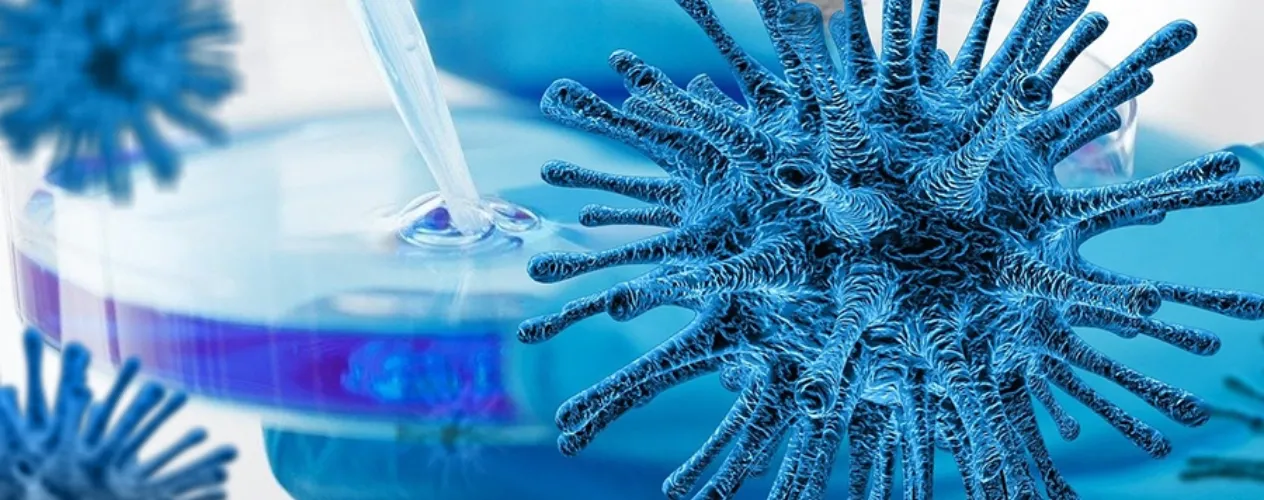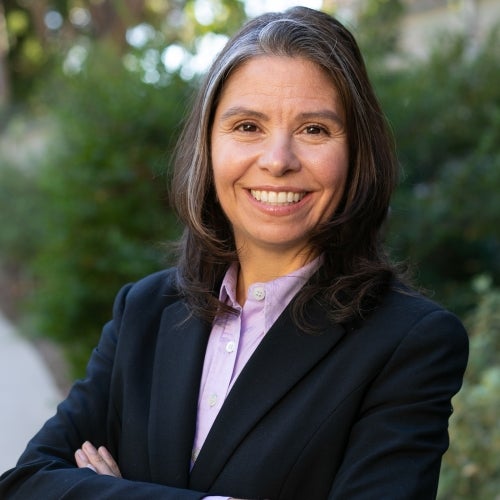Research into SARS-CoV-2 mutation “hotspots” raises implications for vaccines and therapeutics
Christina Ramirez co-led a study that found at least 10 distinct “hotspot” mutations in more than 80% of samples of the viruses’ genomes.

Researchers have found at least 10 distinct “hotspot” mutations in more than 80% of randomly selected SAR-CoV-2 sequences from six countries, and these genome hotspots – seen as "typos" that can occur as the virus replicates during cellular division – could have a significant impact in the fight against the COVID-19 pandemic.
“These hotspots might select for more pathogenic variants,” said Christina Ramirez, UCLA Fielding School of Public Health professor of biostatistics, a co-author of the study. “Alternatively, mutations might evolve and could prove to be less pathogenic – the virus, after all, only survives when the host survives.”
The speed at which novel SARS-CoV-2 mutants are selected and dispersed around the world may also pose issues for the development of vaccines and therapeutics, according to the study in the journal Virus Research, co-authored by Ramirez and colleagues Stefanie Weber and Walter Doerfler, both of the Institute for Clinical and Molecular Virology, Friedrich-Alexander University (FAU), Erlangen, Germany.
“One of the major scientific problems confronted with by the SARS-CoV-2 pandemic lies in our limited understanding of the interactions between the viral and the human host genomes and the latter’s defense mechanisms against this pathogen,” said Doerfler, a physician and molecular geneticist. “The results of our study will provide a platform for those who take care of patients with infections.”
RESEARCH BRIEF
FINDINGS
During worldwide spreading among human populations, at least 10 distinct hotspot mutations had been selected and found in up to more than 80% of the randomly selected sequences from 6 countries. The increasing frequency of SARS-CoV-2 mutation hotspots might select for dangerous viral pathogens. Alternatively, there might be a limit to the number of mutable and selectable sites which, when exhausted, could prove disadvantageous to viral survival. The speed, at which novel SARS-CoV-2 mutants are selected and dispersed around the world, could have implications for the development of vaccines and therapeutics, according to a new study co-authored by Christina Ramirez, UCLA Fielding School of Public Health professor of biostatistics, and colleagues.
BACKGROUND
Severe Acute Respiratory Syndrome Coronavirus-2 (SARS-CoV-2) was first identified in Wuhan, China late in 2019. Nine months later (Sept. 23, 2020), the virus has infected almost 32 million people around the world and caused at least 971,000 (3.07 %) fatalities in 220 countries and territories. Research on the genetics of the SARS-CoV-2 genome, its mutants, and their penetrance, can aid future defense strategies.
METHOD
By analyzing sequence data deposited between December 2019 and end of May 2020, researchers compared nucleotide sequences of 570 SARS-CoV-2 genomes from China, Europe, the United States, and India to the sequence of the Wuhan isolate.
IMPACT
It will now be important to correlate the identified hotspot mutations with the course and outcome of individual infections in humans. This demanding problem has not yet been tackled. Hopefully, the results of our study will provide a platform for those in SARS-CoV-2 research who take care of patients with SARS-CoV-2 infections. SARS-CoV-2 has the ability to mutate and, in its course of dissemination around the world, to select for distinct signal hotspot mutations depending on high rates of genome replication and complex environmental and genetic conditions in newly invaded territories. During its intercontinental journey, the exposure of SARS-CoV-2 to the 21st century’s repertoire of medical resources may have been an additional selective force. The impact of an increase in hotspot SARS-CoV-2 mutations on immunogenesis and the prospects for vaccine development might be experienced and will have to be examined in the future.
AUTHORS
Study authors are Stefanie Weber, Christina Ramirez, and Walter Doerfler.
JOURNAL
The study is published as “Signal hotspot mutations in SARS-CoV-2 genomes evolve as the virus spreads and actively replicates in different parts of the world” in the November, 2020 edition of the peer-reviewed journal Virus Research.
FUNDING
This work was conducted under the auspices of the UCLA Fielding School of Public Health; initiation of this project was undertaken by Stefanie Weber and Walter Doerfler both at the Institute for Clinical and Molecular Virology at Friedrich Alexander University (FAU) in Erlangen-Nürnberg. No external funding was provided.
